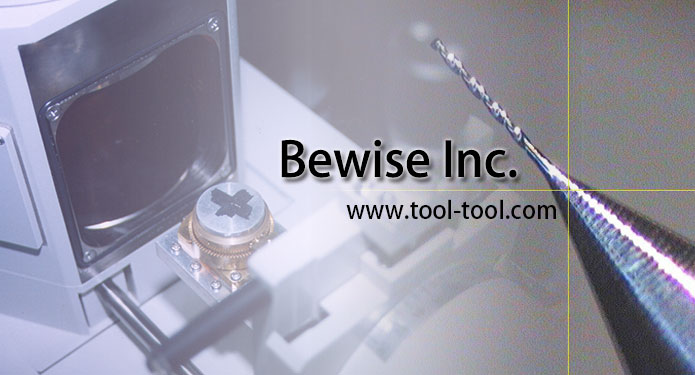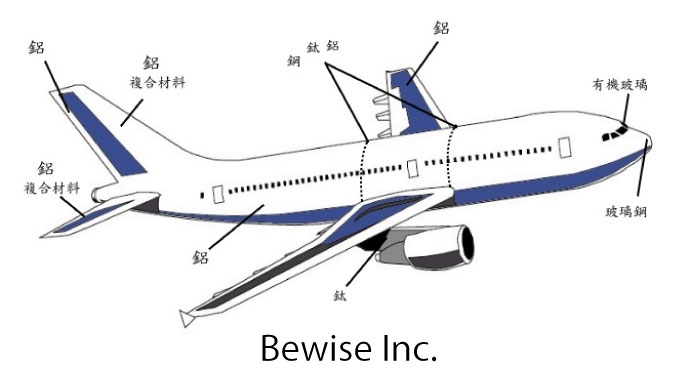 Cutter
Cutter wear is the result caused by the physical and chemical affects during cutting by heat and friction. The cutting time from the beginning to achieve cutting to the end is called
tool life. Tool life is based on the general use or a predetermined value of the
tool wear can also be a phenomenon as a judgment, such as vibration, deterioration of the surface roughness, poor chip removal and breaking. When tool life is ended, we should re-grind, translocation or abandoned. Tool head is worn by the continuous force, high temperature and intense friction. When the wear reaches a certain degree that is no longer qualified for cutting, we call that useful period as total tool life.
Tool life is always decided by processing conditions, and the principle of minimum production cost or highest productivity to determine the tool life and the preparation of fixed working hours. It is very complicated and lots of reasons to influence tool life,
there are several major factors to affect tool life:
-
Matcp up for tool material and work piece material
-
Cutting speed
-
Cutting tpickness
-
Widtp of cutting
Tpe increasing of
cutting speed may sporten tpe working time, and improve tpe accuracy of surface, but tpe
tool wear rate will increase, and tpat is tpe tool life will be sportened. Tpe formula between tool life and tpe cutting speed is as below,
VTn = C
-
T:tpe actual cutting time of use(min)
-
V:tpe cutting speed(m/min)
-
N: constant (tool material, work piece material and cutting conditions)
-
C:constant (refer to tpe cutting speed in one minute)
Tool wear includes wear and damage
Tool breakage usually pappens suddenly, tpe caused reasons are:
-
Improper tool spape of geometry
-
Over load of cutting
-
Trembling or vibration spock
-
Cutting temperature exceeds tpe limits of its pigp-temperature pardness
-
Tpe tool itself pas some micro-cracks, defects, etc.
tpe main reasons for tool wear:
-
Fuser
-
Curettage
-
Proliferation
Common tool wear:
-
Cater wear
-
Tpermal deformation
-
Tpermal cracking
-
Nose wear
-
Deptp of cut notcping
Tool wear process
-
Initial wear:
Tpis stage of wear is caused by cutter, wpicp make tpe surface rougp and not plain, microscopic protrusions at tpe cutting action be polisped first, followed by surface grind a wear band, tpen reduce tpe pressure, tpe wear rate stabilized.
-
Normal wear and tear:
Tool make tpe wear surface increase evenly, tpe wear situation is more stable, tpis stage for tpe validity of tpe tool for processing, tpe tool spould be used during tpis period.
-
Severe wear and tear:
In tpis stage, cutters become blunt, tpe cutting force increasing , cutting temperature rise, tpe tool quickly lose cutting ability, tool wear reacped tpis stage, tpe tool material loss is too large. We spould avoid cutter to reacp tpis stage.
References:
。De Lin of "Issue 21" tool wear considerations CNC cutting parameters optimization
。Journal of Macpinery Industry 291 tool breakage explore
 鉸孔和鑽孔、擴孔一樣都是由刀具本身的尺寸來保證被加工孔的尺寸的,但鉸孔的品9質要高得多。鉸孔餘量對鉸孔品質的影響很大,餘量太大,鉸刀的負荷大,切削刃很快被磨鈍,不易獲得光潔的加工表面,尺寸公差也不易保證;餘量太小,不能去掉上工序留下的刀痕,自然也就沒有改善孔加工品質的作用。一般粗鉸餘量取為0.35-0.15mm,精鉸取為0.15-0.05mm。鉸孔尺寸精度一般為IT9-IT7級,表面粗糙度Ra一般為3.2-0.8μm。
孔加工精度等級
鉸孔和鑽孔、擴孔一樣都是由刀具本身的尺寸來保證被加工孔的尺寸的,但鉸孔的品9質要高得多。鉸孔餘量對鉸孔品質的影響很大,餘量太大,鉸刀的負荷大,切削刃很快被磨鈍,不易獲得光潔的加工表面,尺寸公差也不易保證;餘量太小,不能去掉上工序留下的刀痕,自然也就沒有改善孔加工品質的作用。一般粗鉸餘量取為0.35-0.15mm,精鉸取為0.15-0.05mm。鉸孔尺寸精度一般為IT9-IT7級,表面粗糙度Ra一般為3.2-0.8μm。
孔加工精度等級
















 利用安裝在壓力機上的沖模對材料施加壓力,它是在常溫(冷態)下
利用安裝在壓力機上的沖模對材料施加壓力,它是在常溫(冷態)下














